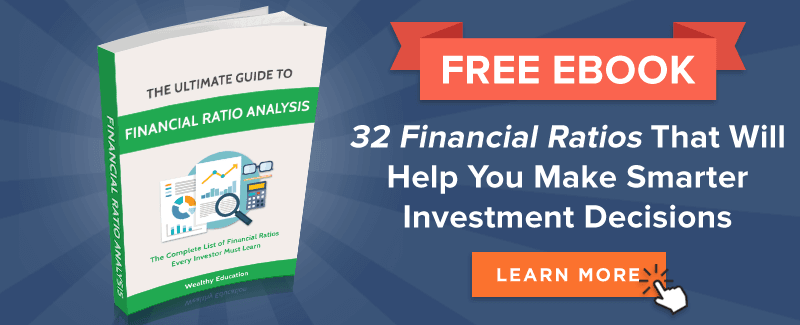This is a detailed guide on how to calculate Cash Return On Capital Invested Ratio (CROCI) with detailed analysis, interpretation, and example. You will learn how to use its formula to assess a firm's profitability.
Definition - What is Cash Return On Capital Invested Ratio?
The cash return on capital invested ratio (CROCI or CROIC), also known as the cash return on cash invested ratio, is a valuation multiple that you can use to gauge a company's capacity to create cash returns on its investments.
This ratio works by comparing the company’s operating cash flow with its gross cash invested by all security-holders.
This advanced metric was created by the Deutsche Bank Group and it works based on an economic profit model.
What makes the CROCI ratio unique is that it provides you with a cash-flow based measurement for assessing the income of a business.
Companies with a higher cash return on invested capital ratio is considered a better investment opportunity as it can generate more cash flow from the capital invested by the shareholders.
More...
CROCI Formula
In order to calculate the cash return on capital invested ratio, you can use the following formula:

Cash Return on Capital Invested Ratio = EBITDA / Invested Capital
EBITDA stands for Earnings Before Interest, Taxes, Depreciation and Amortization.
This figure can be easily calculated by adding back the interest expenses, taxes, depreciation and amortization to a company’s net income, as follows:

EBITDA = Net Income + Interest Expense + Taxes + Depreciation + Amortization
So how can you calculate the invested capital?
Because this is an advanced ratio, so the calculation is a bit tricky. You can use the following formula to calculate a firm’s invested capital.

Invested Capital = Total Equity + Short-term Debt + Leases + Long-term Debt
You can easily find all of these numbers reported on a company’s income statement and balance sheet.
Example
Okay before we dive into the analysis part, just have a look at a quick example so you can understand clearly how to calculate the cash return on cash invested ratio.
For example, you are looking to evaluate Company A’s ability to generate earnings from its invested capital.
After going through the company’s financial statements, you’ve found the following information:
- Net Income = $200,000
- Interest Expense = $8,000
- Taxes = $20,000
- Amortization & Depreciation = $15,000
- Short-term Debt = $65,000
- Long-term Debt = $300,000
- Capital Lease Obligations = $80,000
- Total Shareholders’ Equity = $850,000
First of all, we’ll calculate the company’s EBITDA, like so:

Then, we’ll calculate its invested capital using the above formula:

Finally, we can calculate the CROIC ratio of Company A by dividing its EBITDA by its invested capital, as follows:

The ratio value above suggests that Company AA can generate a 18.76% cash return on its invested capital.
Interpretation & Analysis
It should be noted that the cash return on cash invested ratio works as a cash-flow based metric instead of a profit-based metric.
The interesting thing is that cash-flow based measurements are normally better than profit-based measurements.
That’s because a company can easily manipulate its earnings by using some creative accounting techniques.
For example, the company’s management can easily drive up sales and revenues by loosing their credit terms to encourage customers to buy on credit.
Even though a business can easily cook the book to inflate their earnings for reporting purposes, it cannot lie about its cash flow.
By assessing the operating cash flow figure, you will understand exactly how the cash came into and went out of the business.
This ratio is more useful when it’s used to compare the performance of a company in the past 3 to 5 years.
Now let’s consider another example so you can learn exactly how this ratio can help you evaluate a stock’s profitability.
Assume that you are considering investing in Company B. After looking into its financial statements, you’ve found the following information:
Year 1 | Year 2 | Year 3 | |
|---|---|---|---|
EBITDA | $35,000 | $42,000 | $69,000 |
Invested Capital | $224,000 | $310,000 | $387,000 |
CROIC Ratio | 15.63% | 13.55% | 11.62% |
As you can see that the company’s EBITDA has been increasing consistently over the past 3 years.
For most investors, this is a good sign indicating that Company A is becoming more and more profitable.
However, when you look into its CROCI ratios, you can see that this company is generating less and less cash return.
This is a warning sign that the company has been taking more on debts, but it failed to utilize leverage to create a more desirable earnings result.
Besides, a consistent decrease in CROCI ratio is also a red flag that the company’s management has failed to utilize their shareholders’ capital.
Caution & Further Explanation
The CROIC ratio is affected not only by a company’s debt level, but also by its equity, so you will need to find out what are the main reasons that cause this ratio value to change.
For example, this ratio tends to decline when the company’s level of debt is increasing (assume that the company’s earnings remains the same or slightly increase).
If that’s the case, you must expect the company to earn a much higher profit as the management should do something to increase their profit margin by utilizing debt financing.
Similar to other financial ratios, to draw a better picture of how well a company is doing, you should also compare the CROIC ratio value of a given company with that of its industry peers.
By doing this, you can easily find out which company is the best player in the industry, and which one is performing poorly.


